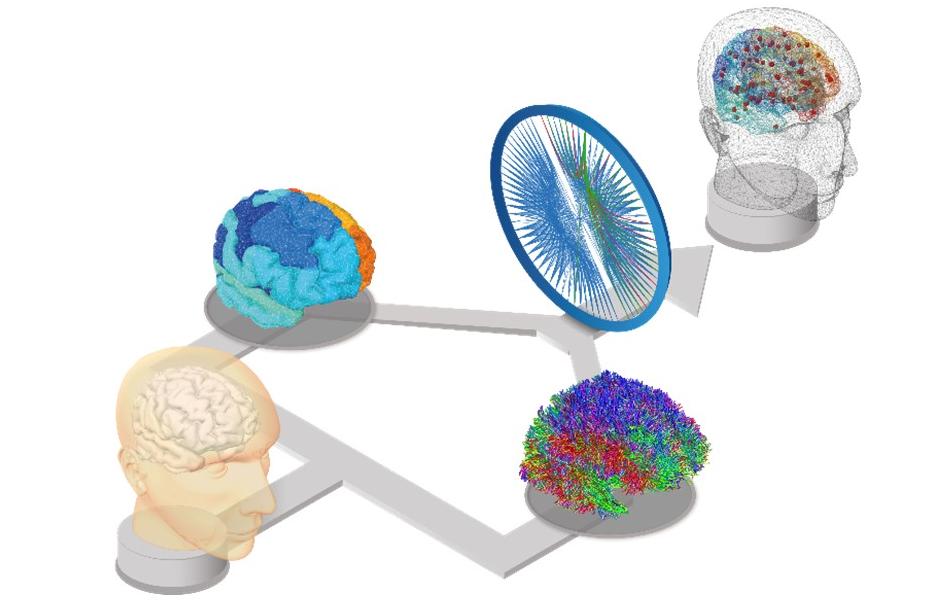
An ICEI pilot project has been set up to support the preparation for clinical trial of the first Bayesian brain network model for assisting routine diagnosis of patients with pharmacologically-resistant epilepsy. For this modeling effort, the Virtual Epileptic Patient (VEP) project, led by Viktor Jirsa, joint efforts with EPINOV, a project led by Fabrice Bartolomei that focusses on clinical trials. For VEP, a large-scale, intensive verification and validation effort was performed using the model inversion algorithms, which are used for the clinical trials. These quality control steps are absolutely necessary for software that is used as a medical device for the purposes of a clinical trial.
The VEP technology was developed in the Human Brain Project (HBP) by the laboratory of Viktor Jirsa at the Institut de Neuroscience des Systèmes (INS) in Marseille. Non-invasive brain imaging enables the reconstruction of individual patients’ brains as illustrated in the figure above. When equipped with computational brain region models, functional brain networks are spanned in 3D, capable of mimicking a patient’s seizure organization. The personalization of a brain model is based on the use of individual structure and connectivity from brain imaging data as well as Bayesian inference of parameters from the patient’s intracranial recordings.
The Fenix Infrastructure resources, offered through the ICEI project, played a crucial role in farming out repetitions of long-running but parallel Markov-Chain Monte Carlo and variational inference algorithms on hundreds of compute nodes to establish the robustness of the results. The VEP model has been running several billion times across a cohort of 50 patients’ training data. Feedback from the ICEI project team helped to tune the runs and accommodate challenges such as long running jobs.
The EPINOV clinical trial has meanwhile been approved. The project is currently scaling up data collection, which will be extended to 13 centers across France, accumulating nearly 400 datasets over three years. Each patient’s dataset will be fitted to a unique, individualized brain model using the VEP framework. The results of the modeling are synthesized into a clinical report designed for use in the clinician’s meetings, alongside other data modalities, such as PET and fMRI scans.
References:
Hashemi M, Vattikonda AN, Sip V, Guye M, Bartolomei F, Woodman MM, Jirsa VK (2020) The Bayesian Virtual Epileptic Patient: A probabilistic framework designed to infer the spatial map of epileptogenicity in a personalized large-scale brain model of epilepsy spread, NeuroImage, Volume 217, 116839.
Proix T, Jirsa VK, Bartolomei F, Guye M, Truccolo W (2018) Predicting the spatiotemporal diversity of seizure propagation and termination in human focal epilepsy. Nature Comm 1088, doi:10.1038/s41467-018-02973-y.
Proix T, Bartolomei F, Guye M, Jirsa VK (2017) Individual brain structure and modeling predict seizure propagation. Brain 140 (3): 641-654.
Jirsa VK, Proix T, Perdikis D, Woodman MM, Wang H, Gonzalez-Martinez J, Bernard C, Bénar C, Chauvel P, Bartolomei F (2016) The Virtual Epileptic Patient: Individualized whole-brain models of epilepsy spread. Neuroimage doi :10.1016/j.neuroimage.2016.04.049.